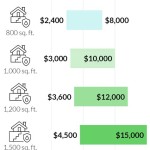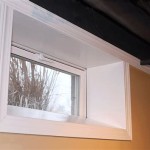Do You Need A Floor Drain In The Basement?
The basement is usually the lowest level of a house and is often used for storage, laundry, or as a recreation room. The basement is also more susceptible to flooding than other parts of the house, especially if it is located in an area that is prone to heavy rainfall or flooding.
A floor drain is a drain that is installed in the floor of a room to allow water to drain away. Floor drains are often used in basements to help prevent flooding, and they can also be used to drain water from appliances, such as washing machines and dishwashers.
Advantages of Installing a Floor Drain in the Basement
There are several advantages to installing a floor drain in the basement, including:
- Prevents flooding: A floor drain can help to prevent flooding in the basement by allowing water to drain away quickly. This is especially important in areas that are prone to heavy rainfall or flooding.
- Drains water from appliances: A floor drain can be used to drain water from appliances, such as washing machines and dishwashers. This can help to prevent the appliances from overflowing and causing damage to the basement.
- Easy to install: Floor drains are relatively easy to install, and they can be done by a do-it-yourselfer with basic plumbing skills.
Disadvantages of Installing a Floor Drain in the Basement
There are also some disadvantages to installing a floor drain in the basement, including:
- Can be expensive: Floor drains can be expensive to install, especially if they require professional installation.
- Can be unsightly: Floor drains can be unsightly, and they may not match the décor of the basement.
- Can be a tripping hazard: Floor drains can be a tripping hazard, especially if they are not properly installed or maintained.
Alternatives to Installing a Floor Drain in the Basement
If you are not sure whether or not you need a floor drain in the basement, there are several alternatives that you can consider, including:
- French drain: A French drain is a trench that is filled with gravel or crushed stone. The trench is then covered with a perforated pipe that allows water to drain away. French drains are often used to drain water away from the foundation of a house.
- Sump pump: A sump pump is a pump that is used to remove water from a basement. Sump pumps are often used in areas that are prone to flooding.
- Vapor barrier: A vapor barrier is a material that is used to prevent moisture from entering the basement. Vapor barriers are often installed on the walls and floor of the basement.
Conclusion
The decision of whether or not to install a floor drain in the basement is a personal one. There are several factors to consider, including the climate in your area, the condition of your basement, and your budget. If you are not sure whether or not a floor drain is right for your basement, it is best to consult with a professional.

Basement Floor Drain What You Need To Know About It

6 Types Of Basement Floor Drains

Basement Floor Drain Keeping Your Home Dry

Floor Drains Finished Basements Best Practices Solutions Csg Renovation

Basement Drains 101 A Simple Guide For Busy Homeowners

Basement Floor Drain What You Need To Know About It

Why Do I Have Standing Water In Basement Floor Drain

Floor Drains Rodding Snaking Repair Installation

Dealing With Basement Water From The Inside Greenbuildingadvisor

A Homeowners Guide To Basement Drains Tar Heel Systems
Related Posts







